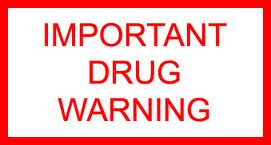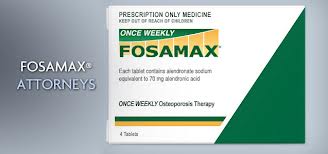New Draft FDA Guidance On Off-label Uses Raises Concerns
By admin on March 19, 2014
 On March 3, 2014, FDA made available for comment a revised draft of its “Guidance for Industry: Distributing Scientific and Medical Publications on Unapproved New Uses–Recommended Practices“. The revised guidance seeks to clarify and expand upon FDA’s 2009 draft guidance that generated significant controversy. Although the recently released draft guidance addresses some industry concerns, does it address the concerns of those who believed the earlier guidance took a position at variance with the First Amendment?
On March 3, 2014, FDA made available for comment a revised draft of its “Guidance for Industry: Distributing Scientific and Medical Publications on Unapproved New Uses–Recommended Practices“. The revised guidance seeks to clarify and expand upon FDA’s 2009 draft guidance that generated significant controversy. Although the recently released draft guidance addresses some industry concerns, does it address the concerns of those who believed the earlier guidance took a position at variance with the First Amendment?
In summary, the draft guidance expands upon the types of materials that may be distributed (subject to FDA’s enforcement discretion) and, for the first time, includes clinical practice guidelines. In particular, industry had been pushing for more clarity from FDA on this issue. The draft guidance requires that a manufacturer, before disseminating a clinical practice guideline, establish that the clinical practice guideline is “trustworthy” and, as detailed in the Client Alert, meets six tests based on standards developed by the Institute of Medicine.
Of particular interest, however, is the extent to which FDA may be modifying its position on restrictions on truthful, non-misleading, off-label speech in light of the Second Circuit’s important 2012 decision in U.S. v. Caronia.
FDA has long held the position that, although off-label promotion by pharmaceutical manufacturers and/or their agents is not expressly prohibited by the FDCA or its attendant regulations, such commercial activities are impliedly prohibited as “misbranding.” Thus, when a drug is placed in interstate commerce without adequate directions for use and adequate warnings It is the FDA’s view that, by definition, a drug fails to bear adequate directions for an off-label use. Therefore, promotion beyond the scope of the product label may be construed as “misbranding” in violation of the FDCA.
In Caronia, the Second Circuit vacated the conviction of Alfred Caronia, a former pharmaceutical sales representative for Jazz Pharmaceuticals whom a federal district court jury found guilty of conspiring to introduce a “misbranded” drug into interstate commerce in violation of the FDCA.
sales representative for Jazz Pharmaceuticals whom a federal district court jury found guilty of conspiring to introduce a “misbranded” drug into interstate commerce in violation of the FDCA.
The majority held that the FDCA’s misbranding provisions cannot be interpreted as a blanket ban on off-label promotion by pharmaceutical manufacturers. However, the court was clear that its holding did not prevent the FDA from regulating the marketing or promotion of prescription drugs and limited its decision to the truthful off-label promotion of prescription drugs for which an off-label use is not prohibited. The court also stated that more narrowly tailored regulation of speech by the FDA as it concerns off-label use might survive judicial scrutiny.
In analyzing Caronia, it is important to keep in mind that courts, in general, are hesitant to criminalize speech without an articulable public good (such as harm or safety) to be gained from doing so. That is, a desire merely to stop speech is not a sufficient interest (without another countervailing public need) in order to permit the government to regulate or prohibit speech.
In earlier cases, the Supreme Court has disfavored categorical bans on truthful, non-misleading speech because it arises from the “paternalistic assumption” that the public will use truthful, non-misleading commercial information unwisely, Such paternalism is all the more misguided when the speech is being directed to the medical community over whom FDA can assert no regulatory authority. A medical clinician, who has presumably more knowledge than FDA staffers about the diseases and conditions she treats, should not be unnecessarily hamstrung in seeking to become more knowledgeable about a particular drug.
Although Caronia represented a setback for the Agency, it is inaccurate to conclude from this decision that FDA does not retain broad regulatory authority to regulate promotional speech. The likely battleground in the future will be when the First Amendment is raised as a defense to civil fraud cases, particularly qui tam actions, brought under the federal civil False Claims Act.
 The revised draft guidance does not include the same blanket prohibitions included in the earlier pre-Caronia guidance. Under the revised draft guidance, some highlighting and summarizing is permitted as long as it does not promote an off-label use or is misleading. Although FDA clearly still believes that it can regulate non-misleading speech, it has backed off somewhat (perhaps in light of Caronia), and sought to bolster its position by adhering closely to the statutory prohibitions in the FDCA.
The revised draft guidance does not include the same blanket prohibitions included in the earlier pre-Caronia guidance. Under the revised draft guidance, some highlighting and summarizing is permitted as long as it does not promote an off-label use or is misleading. Although FDA clearly still believes that it can regulate non-misleading speech, it has backed off somewhat (perhaps in light of Caronia), and sought to bolster its position by adhering closely to the statutory prohibitions in the FDCA.
In the absence of further modification of the draft guidance, to what extent will the risk of noncompliance outweigh the benefit to industry of being able to distribute scientific or medical publications on unapproved new uses? How will the new guidance affect, if at all, the ability of the medical community to obtain reliable information on off-label uses from drug manufacturers? It will be interesting to see how the various stakeholders’ positions evolve during discussions over the coming months.

 The
The  discontinuing the use of all non-compliant promotional materials.
discontinuing the use of all non-compliant promotional materials. forward in a world increasingly dominated by social media, challenges and opportunities abound. On the one hand, there are the missteps, as we see in the case of IBSA. On the other hand, the pharmaceutical industry is moving ahead of the curve to use social media to ensure that its prescribing physicians are well-educated and their patients provided the best possible care. We hope that the final social media guidance facilitates, rather than impedes, this process.
forward in a world increasingly dominated by social media, challenges and opportunities abound. On the one hand, there are the missteps, as we see in the case of IBSA. On the other hand, the pharmaceutical industry is moving ahead of the curve to use social media to ensure that its prescribing physicians are well-educated and their patients provided the best possible care. We hope that the final social media guidance facilitates, rather than impedes, this process. The author acknowledges the important contributions made to this article
The author acknowledges the important contributions made to this article by
by  Often the physician, a trained clinician, will testify that she was familiar with the risks in question and did not need to be provided a warning. Alternatively, the physician may testify that a stronger warning would not have influenced her decision to prescribe the drug and that she still prescribes the drug, although the problem with this, is that some drugs are known for causing addiction sometimes, so the use of an
Often the physician, a trained clinician, will testify that she was familiar with the risks in question and did not need to be provided a warning. Alternatively, the physician may testify that a stronger warning would not have influenced her decision to prescribe the drug and that she still prescribes the drug, although the problem with this, is that some drugs are known for causing addiction sometimes, so the use of an  to every warning claim – the defect (whatever is allegedly wrong with the warning) has to cause the injury. If the prescribing physician never even read the purportedly inadequate warning, none of those inadequacies could have affected his/her treatment of the patient.”
to every warning claim – the defect (whatever is allegedly wrong with the warning) has to cause the injury. If the prescribing physician never even read the purportedly inadequate warning, none of those inadequacies could have affected his/her treatment of the patient.” More recently, we discussed the use of a
More recently, we discussed the use of a  trials for thirty years, he has developed good instincts in determining when judicial resources are being squandered. Although he did not come right out and state as much, he had clearly become frustrated by Plaintiff’s Steering Committee wasting the court’s time and forcing Merck’s trial counsel to jump through unnecessary hoops.
trials for thirty years, he has developed good instincts in determining when judicial resources are being squandered. Although he did not come right out and state as much, he had clearly become frustrated by Plaintiff’s Steering Committee wasting the court’s time and forcing Merck’s trial counsel to jump through unnecessary hoops.  In product liability litigation, a single tactical advantage may determine whether the case is won or lost. Often, being able to anticipate an issue before it arises and addressing it in the Case Management Order may be critical. This is particularly the case in pharmaceutical mass tort litigation.
In product liability litigation, a single tactical advantage may determine whether the case is won or lost. Often, being able to anticipate an issue before it arises and addressing it in the Case Management Order may be critical. This is particularly the case in pharmaceutical mass tort litigation.
 The Second Circuit yesterday rendered its much-anticipated decision in
The Second Circuit yesterday rendered its much-anticipated decision in  Given the importance of the case, it is likely that rehearing en banc will be sought and, perhaps, a petition filed by the government with the Supreme Court. However, it also may be the government’s strategy to follow a policy of non-acquiescence and litigate the point in other circuits, hoping to create a split. In any event, this is a case that pharmaceutical and medical device companies need to watch closely.
Given the importance of the case, it is likely that rehearing en banc will be sought and, perhaps, a petition filed by the government with the Supreme Court. However, it also may be the government’s strategy to follow a policy of non-acquiescence and litigate the point in other circuits, hoping to create a split. In any event, this is a case that pharmaceutical and medical device companies need to watch closely.  The Texas Supreme Court rendered judgment in favor of
The Texas Supreme Court rendered judgment in favor of 
 In the case of
In the case of  product innovation. Mr. Crovitz compares the American legal culture behind the Court’s decision to the Luddites that smashed mechanized looms in England at the beginning of the Industrial Age in 19th century England. He also suggests that the decision’s logic may lead product manufacturers to "carry 50 different warnings, one for each state, updated by local juries from time to time." Despite his misgivings about the decision, it is not likely that any product manufacturers, drug makers or otherwise, are likely to start tailoring their warning on a state by state basis. As a practical matter, products are sold nationally, often through distributors, and it would be virtually impossible to ensure that product warnings for Texas purchasers ended up in Texas and that product warnings intended for California purchasers ended up in California. Moreover, from a jury standpoint, nothing would please a plaintiff’s lawyer more than to be able to argue that the manufacturer provided a less strict warning for the product in the jurisdiction where his client’s accident occurred.
product innovation. Mr. Crovitz compares the American legal culture behind the Court’s decision to the Luddites that smashed mechanized looms in England at the beginning of the Industrial Age in 19th century England. He also suggests that the decision’s logic may lead product manufacturers to "carry 50 different warnings, one for each state, updated by local juries from time to time." Despite his misgivings about the decision, it is not likely that any product manufacturers, drug makers or otherwise, are likely to start tailoring their warning on a state by state basis. As a practical matter, products are sold nationally, often through distributors, and it would be virtually impossible to ensure that product warnings for Texas purchasers ended up in Texas and that product warnings intended for California purchasers ended up in California. Moreover, from a jury standpoint, nothing would please a plaintiff’s lawyer more than to be able to argue that the manufacturer provided a less strict warning for the product in the jurisdiction where his client’s accident occurred. 